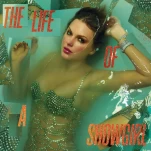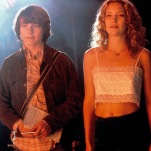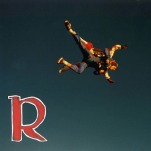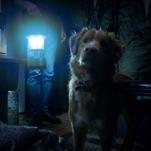National Geographic’s Brilliant One Strange Rock Will Change the Way You Look at Your Planet
Photo: NASA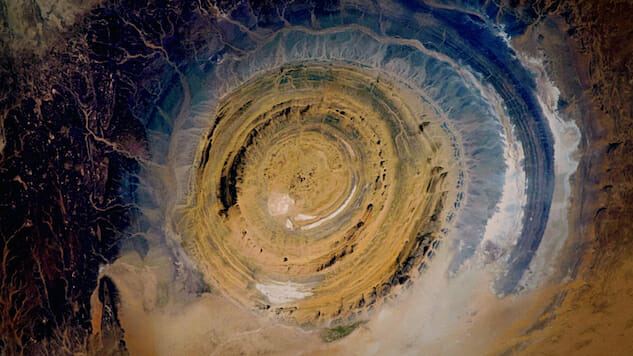
Earlier this year, Sir David Attenborough took American audiences back into the depths of the oceans with the spectacular Blue Planet II. The message of ambitious, large-scale natural history programming is almost always a reminder that we are inherently and intricately connected to other forms of life on the only planet we currently know to be a home to living things. No ecosystem operates independently; all our actions matter. It can be alarming to see how fast a tiny system can become endangered and how that ripples outward: The Earth in microcosm is awe-inspiring and humbling and sometimes a little scary.
For a beautifully orchestrated macrocosmic counterpoint, I strongly recommend you tune in to National Geographic Channel’s One Strange Rock. This 10-part epic (director Darren Aronofsky has called it “a visual Bible”) is dedicated to asking—and in some cases even positing answers to—the big questions about how the world works. And one of the key components is a group of episodic hosts with the very rare distinction of having personally seen the world from space. As it turns out, getting off the planet is a great way to understand what’s really going on with it. And in a time when it’s easy to dissolve into hysterics or hopelessness about the state of our fragile and imperiled environment, it might be the perfect moment for a serious long-range view of things. Yes, the planet is fragile. It is also, in the face of (pun intended) astronomical odds, a masterwork of homeostasis, with a capacity for self-renewal, proliferation and diversity that might be incalculable even if you are a rocket scientist. Don’t get me wrong, the message isn’t, “Hey, kids, don’t worry about plastic in the oceans; the sun’s going to eat this place eventually anyway.” On the contrary, the emphasis on how tenuous and unlikely a habitable planet is in the first place reminds us both that there are forces we cannot possibly control dancing around us every second, and that in spite of this we all share a burden of responsibility to understand how utterly interdependent we all are, and to act accordingly.
Narrating this stunningly shot, wide-ranging exploration into the nature of physical existence is not a gig you hand over to just anyone, and I think Aronofsky and Nutopia made a pretty perfect call in putting Will Smith in that chair. Curious, genuine, and the dictionary definition of “relatable,” Smith exudes a kind of unaffected, humorous, laid-back intelligence that enables him to bring extremely complex and technically sophisticated ideas to a lay audience without sounding either patronizing or out of his depth. There are remote corners of this planet, places you’ll never visit and have never heard of, that are directly and specifically responsible for the fact that you’re breathing right now. Illuminating the bizarre string of accidents and adaptations that have resulted in a planet with an oxygen-rich atmosphere isn’t actually all that easy, but he’s awesome at making it seem so.
Likewise, the eight astronauts who help curate the episodes are an embarrassment of riches; in the episodes made available to press, I think two of these scientists made me laugh out loud, one made me cry more than once (thanks, Chris Hadfield!) and all of them—well, I’m not sure how to put this other than to say that poets should probably pay a lot more attention to astronauts. These people are trained for extreme precision and economy under tremendous pressure and even their everyday civilian speech reflects it. They’re insanely eloquent and insightful, which makes sense when you consider that part of their job is to act as ambassador for a brain-twisting vision of the planet that most of us will not experience firsthand.
Those of you who are not poets should also take advantage of this opportunity to pay attention to astronauts, and to the panoply of anthropologists, biologists, physicists, artists and producers who orchestrated this cosmic voyage. One Strange Rock is wall-to-wall brilliant, forging connections between the deep past and the far future (a human’s sense of time and geologic time are pretty radically different), our planet and the sun, all the strange and perhaps random coinciding processes that happen to collude in building the infrastructure to support a bewildering diversity of life forms. And to ask, if it’s so unlikely that it happened here, how likely is it that we’re alone out here?
Immersed in daily terrestrial life, we’re busy, local little specks without much activated sense of the giant cosmic bullets we’re dodging at any given time. It’s not just awe-striking to see beautiful pictures of what that looks like from a 250-mile remove, though even that would be reason enough to tune in. It’s… a relief. To see how small and random we really are paves a funny little path to gratitude that we get to be here for a few shockingly brief moments, in spite of ourselves, and in spite of forces infinitely more destructive than we could possibly be. I’m officially declaring One Strange Rock mandatory viewing for humans.
One Strange Rock premieres Monday, March 26 at 10 p.m. on National Geographic Channel.
Amy Glynn is a poet, essayist and fiction writer who really likes that you can multi-task by reviewing television and glasses of Cabernet simultaneously. She lives in the San Francisco Bay Area.
